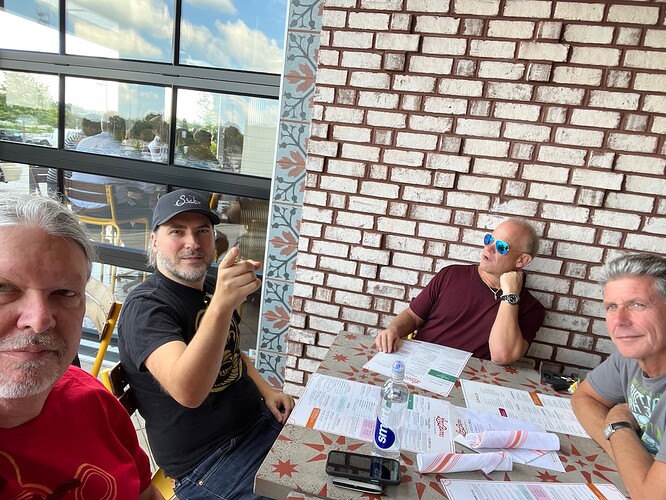TLDR; I started out trying to implement a DBX using the “motorcycle grip” motion. Switching to the “key turning motion” has worked much better.
I’m a couple of years into my alternate picking journey, and I’m greatly indebted to Troy and CTC for introducing me to Andy Wood and the whole crowd of excellent Knoxville musicians including Uncle Ben Eller. I’m a three-time attendee at Andy’s Woodshed camp and have gone to two other gigs with Andy and guests at Open Chord Stage in Knoxville.
Anyway, a few months back Uncle Ben included mention of the “key turning motion” in one of his YouTube posts, and that sparked me to try it instead of the “motorcycle grip” motion I had adopted upon seriously pursuing a DBX picking motion. This has made a significant improvement in my accuracy and a non-trivial increase in speed for crosspicking, 1NPS arps, etc.
I think what happened early on was that I saw the slo-mo videos of Andy’s mechanic, and interpreted it as one integrated motion including both translation and rotation (if I recall these terms correctly), and tried and failed to follow his example. So I pursued translation and the “motorcycle grip” motion.
Ben’s suggestion lead me to try something similar to Andy’s motion as the sum of two motions rather than one continuous integrated motion but the result effectively is the same, an arc that goes into and comes out of the strings during the translation.
One person’s view.
Peace,
Jim




 If thinking about it that way helps though…no harm I guess!
If thinking about it that way helps though…no harm I guess!
